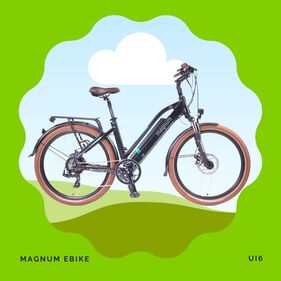 When you mention you ride an ebike to someone who is an avid cyclist who goes on 50-100 miles rides on a road bike or is a year around daily commuter who rides 70 miles per week you can almost hear the sneer. An ebike has a motor so is that even cycling? Are you getting any exercise? You may be outdoors but are you working hard enough to get your heart rate up?  Some recent studies conducted mostly overseas where ebikes have been popular for years show that the answer is a definitive “yes”. There are different types of ebikes, legally categorized as class 1, 2, or 3, and it is the class 1 ebike that requires you to pedal with the motor providing an assist that cuts out at 20 mph. Studies of users of a pedal assist ebikes show they ride more miles, they make more trips, and they get their heart rates up to a range where there are health benefits more so than those that use bikes with no assistance. Further there are environmental benefits because ebike users use their car less, replacing some auto trips with cycling trips. These studies have been called “counterintuitive” because they show that having a motor on a bike results in getting more exercise. A pedal-assist ebike is actually pushing people to work harder. A University of Zurich study (1) found that ebike riders tend to get the same level of physical activity due to covering much greater distances, and choosing their bike over motorized modes of transportation for some trips. The study recruited10,000 participants in seven European countries and found that physical activity levels were similar among ebike users and non-assisted cyclists. Ebike users reported significantly longer trip distances for both ebike (5.8 mile) and non-assisted bicycle trips (5.3 mile) compared to cyclists for bicycle trips (2.9 mile), as well as longer daily travel distances (4.0 vs. 3.2 mile per person, per day). A Brigham Young University study (2) found that the ebike ride still pushed riders into the “moderate to vigorous” heart rate zone—in fact, they hit 94 percent of the average heart rate as on a non-assisted bike. In addition, their perception of the ebike ride was different: It didn’t feel like a strenuous workout. They still got the benefits of riding, but did not feel as challenged. That’s good for people who might be less inclined to exercise, because of an injury or coming from a more sedentary lifestyle. For them, ebikes might be a way to overcome the “workouts are too difficult” problem and be a catalyst to help individuals become more physically active. A study led by the Institute of Sports Medicine at Hannover Medical School published in July 2020 (3) involved 101 participants who alternated riding either a standard bicycle or an ebike over two separate two-week periods found their rides on the ebike were more frequent. Their heart rates, however, were about 8 per cent lower when they pedaled ebikes, but still consistently hovered within the range considered moderate exercise resulting in sufficient activity to meet the standard exercise recommendation of 150 minutes. During the period when they rode a bike with no assistance, they did not meet the exercise recommendation. A Norwegian study (4) found ebike users more than doubled cycling for transportation and cycled an average 5.7 miles per day compared to 1.3 miles before using an ebike. Ebike users took more trips by bike compared to other modes of transport such as driving or public transport. Ebike users took 49% of all journeys by ebike compared to 17% before purchasing an ebike. Contrary to previous studies that are short term and only measure people over a test period or involve participants self-reporting on their activity’s levels, the data from this study was collected over six months to see if the good habits persisted. The mode change to more cycling trips was not just a novelty effect. Ebikes are now allowed on many public lands including mountain bike trails. There is growing interest in using an assist to get up mountains in order to make more of those fun trips coming down resulting in longer periods of recreation and more exercise. And as for the accusation that ebikes are cheating--is getting to work without getting sweaty cheating? Is passing other riders with ease cheating? Is riding uphill at a steady 19 mph without getting out of breath cheating? Is keeping up with a stronger friend cheating? If you consider these cheating, than count us guilty as charged. -------------------------------------------------------------------------------------------------------------------------------------------- (1) Per a study by by Alberto Castro, Mailin Gaupp-Berghausen, et. all, University of Zurich, published by Transportation Research Interdisciplinary Perspectives, June 2019. (2) Per a study "Pedal-Assist Mountain Bikes: A Pilot Study Comparison of the Exercise Response, Perceptions, and Beliefs of Experienced Mountain Bikers" July-Sept 2019 by Brigham Young University (3) Per a study by H. T. Stenner, J. Boyen, J., M. Hein, G. Protte, M. Kück, et.all “Everyday Pedelec Use and Its Effect on Meeting Physical Activity Guidelines. Int. J. Environ. Res. Public Health 2020, 17, 4807. (4) Per a study by Aslak Fyhri, Hanne Beate Sundfor, Norway’s Institute for Transport Economics, “Do people who buy ebikes cycling more?” Journal of Transportation Research, Vol 86, Sept. 2020. Comments are closed.
|
Earth Rider Blog about CycingAuthorSharon Kaminecki and others comment on adventures in bicycling and other stories Categories
All
Archives
August 2023
|


